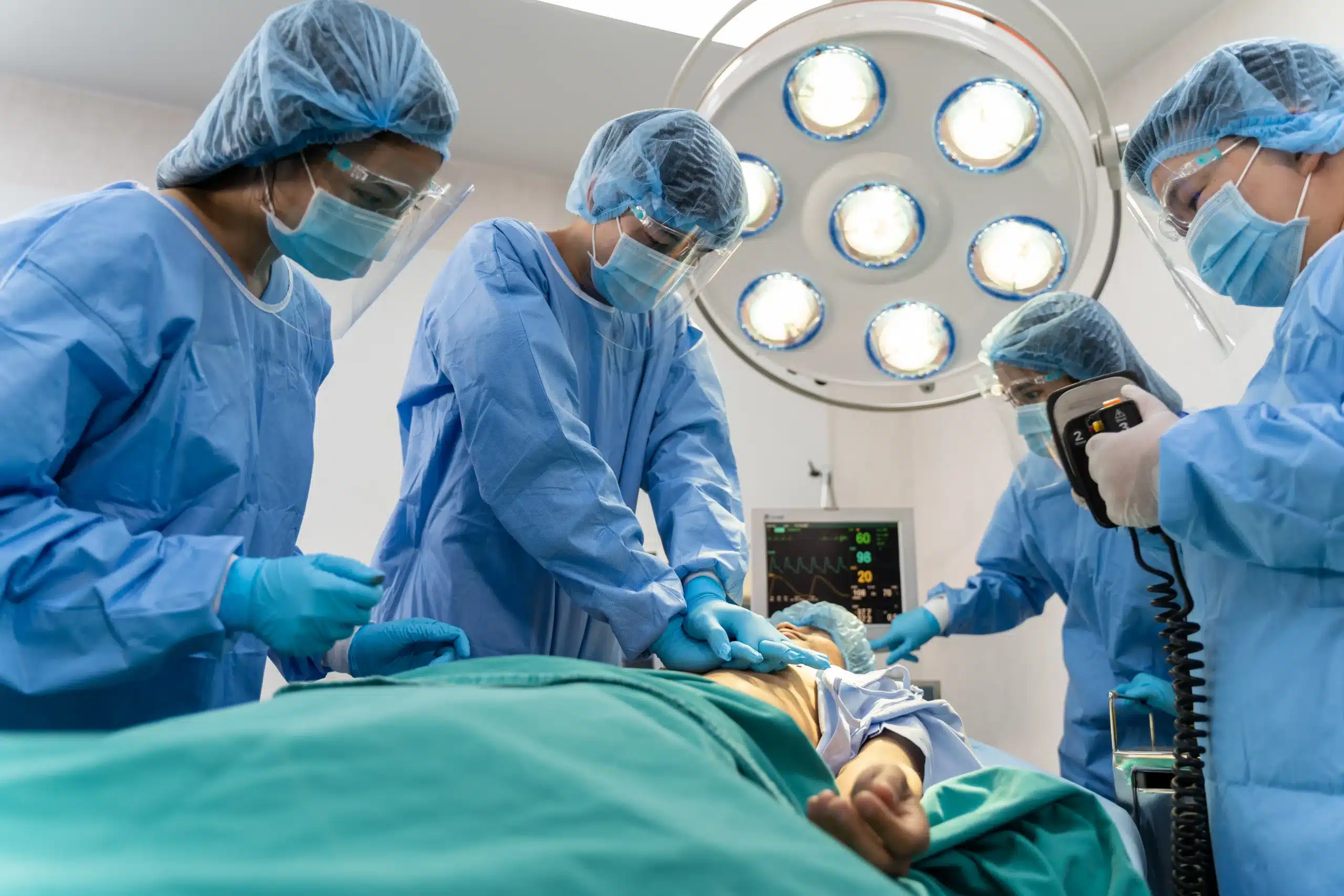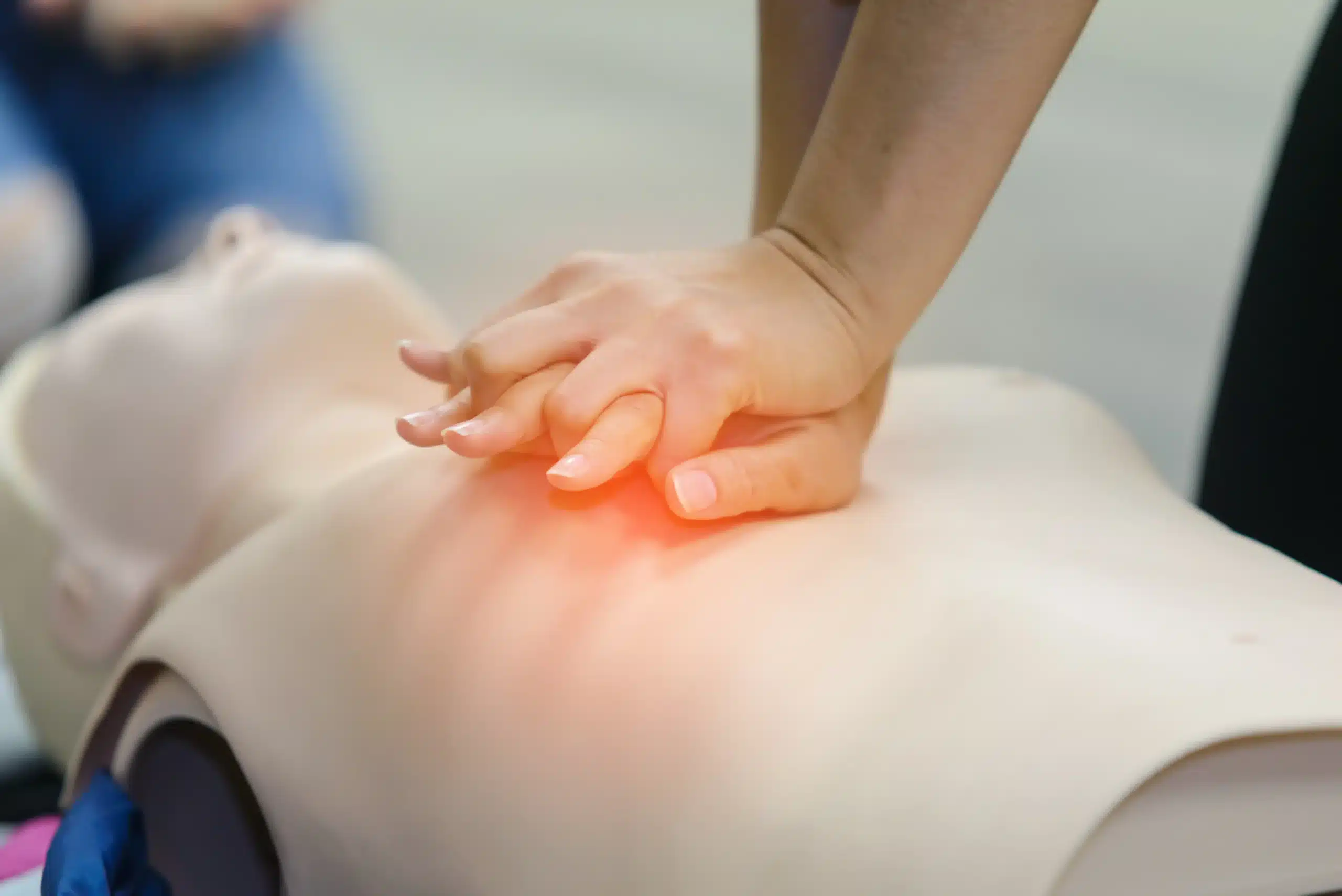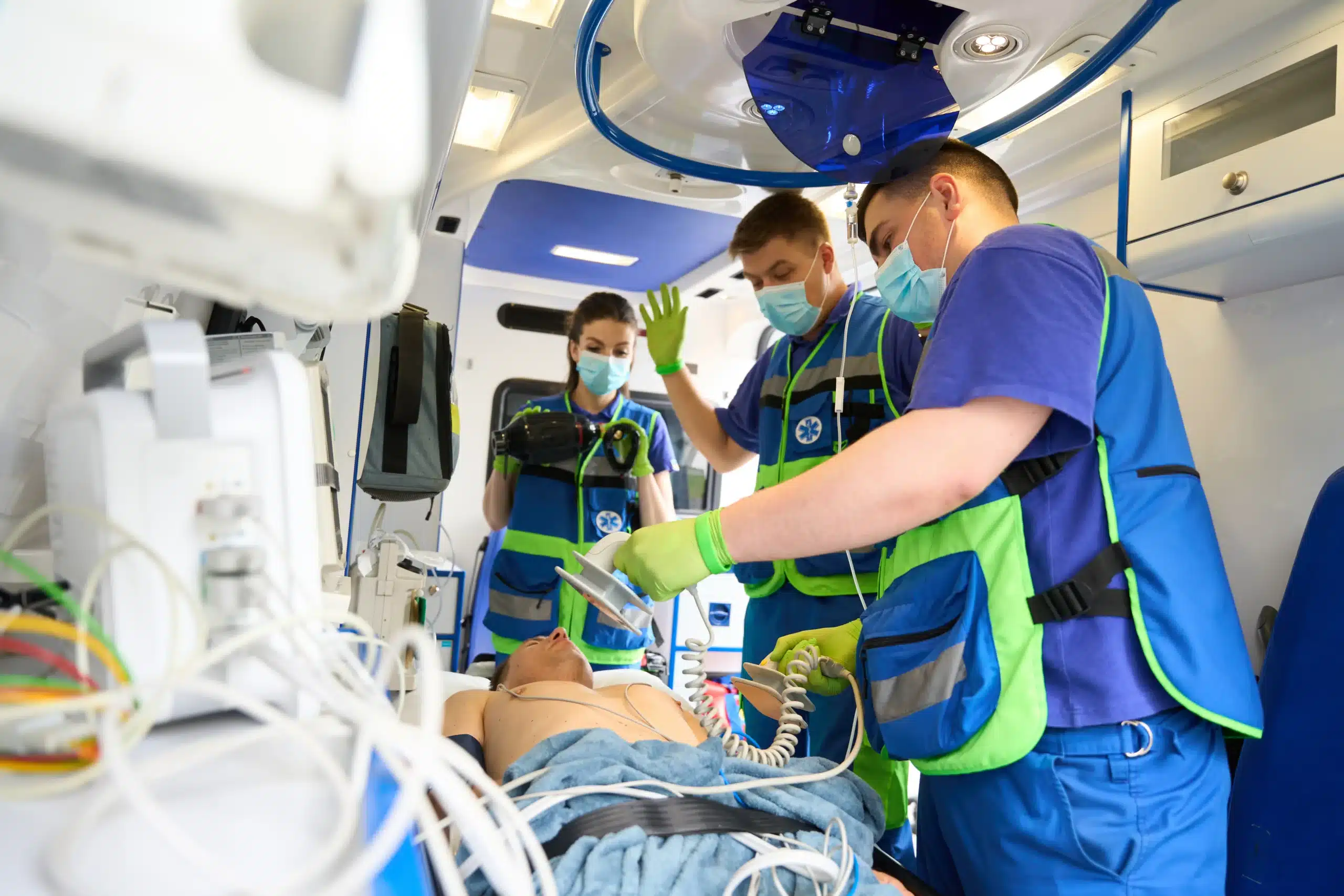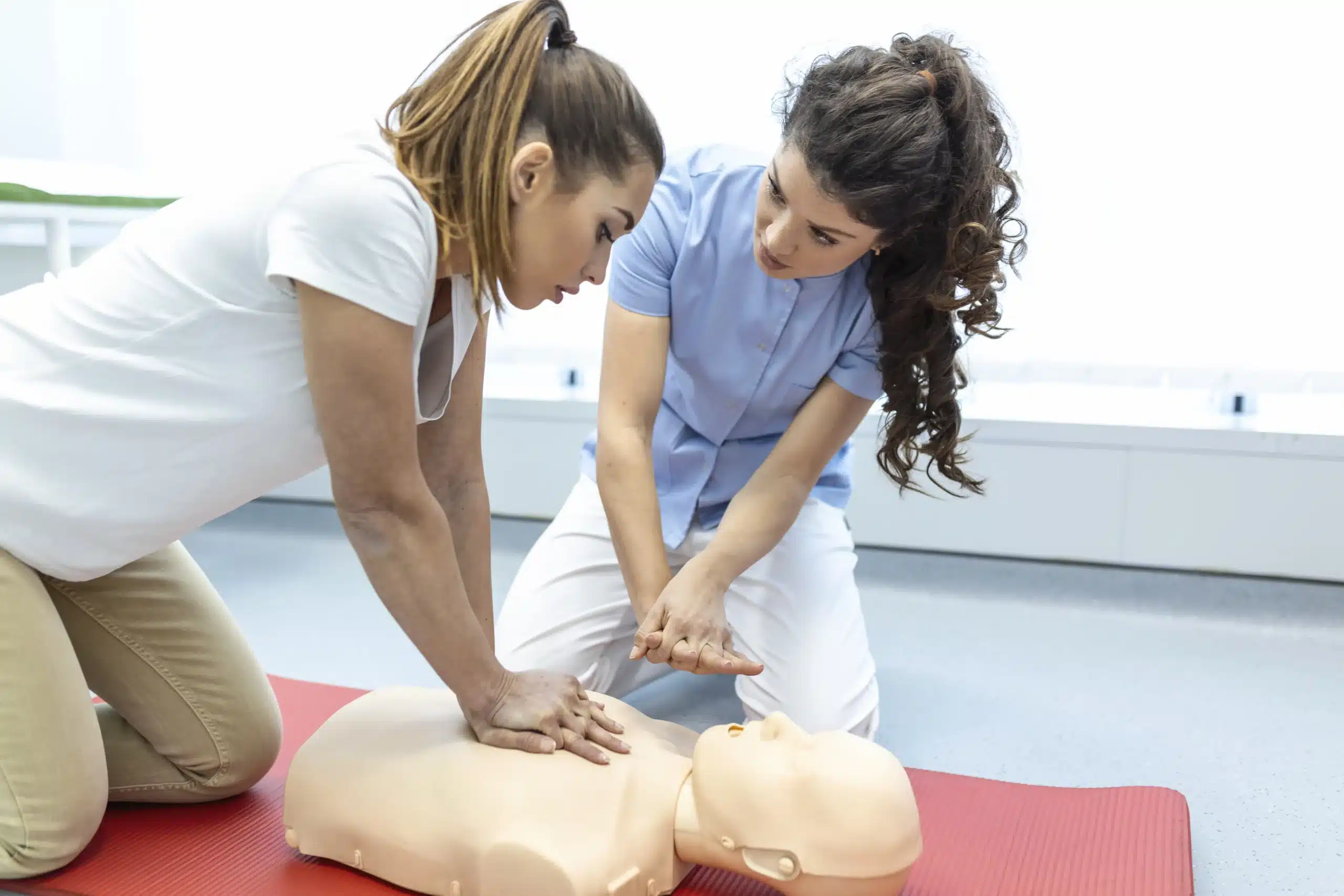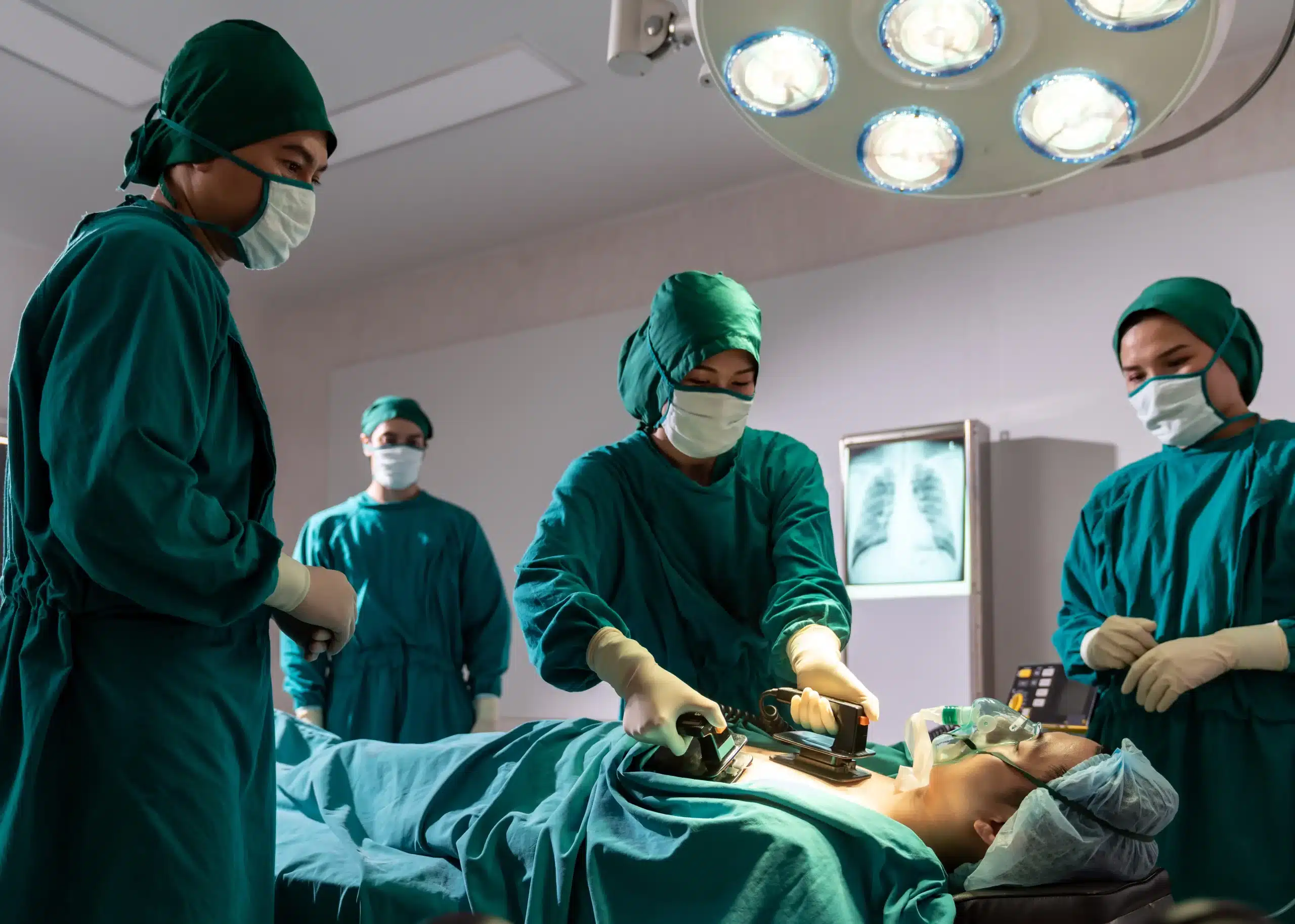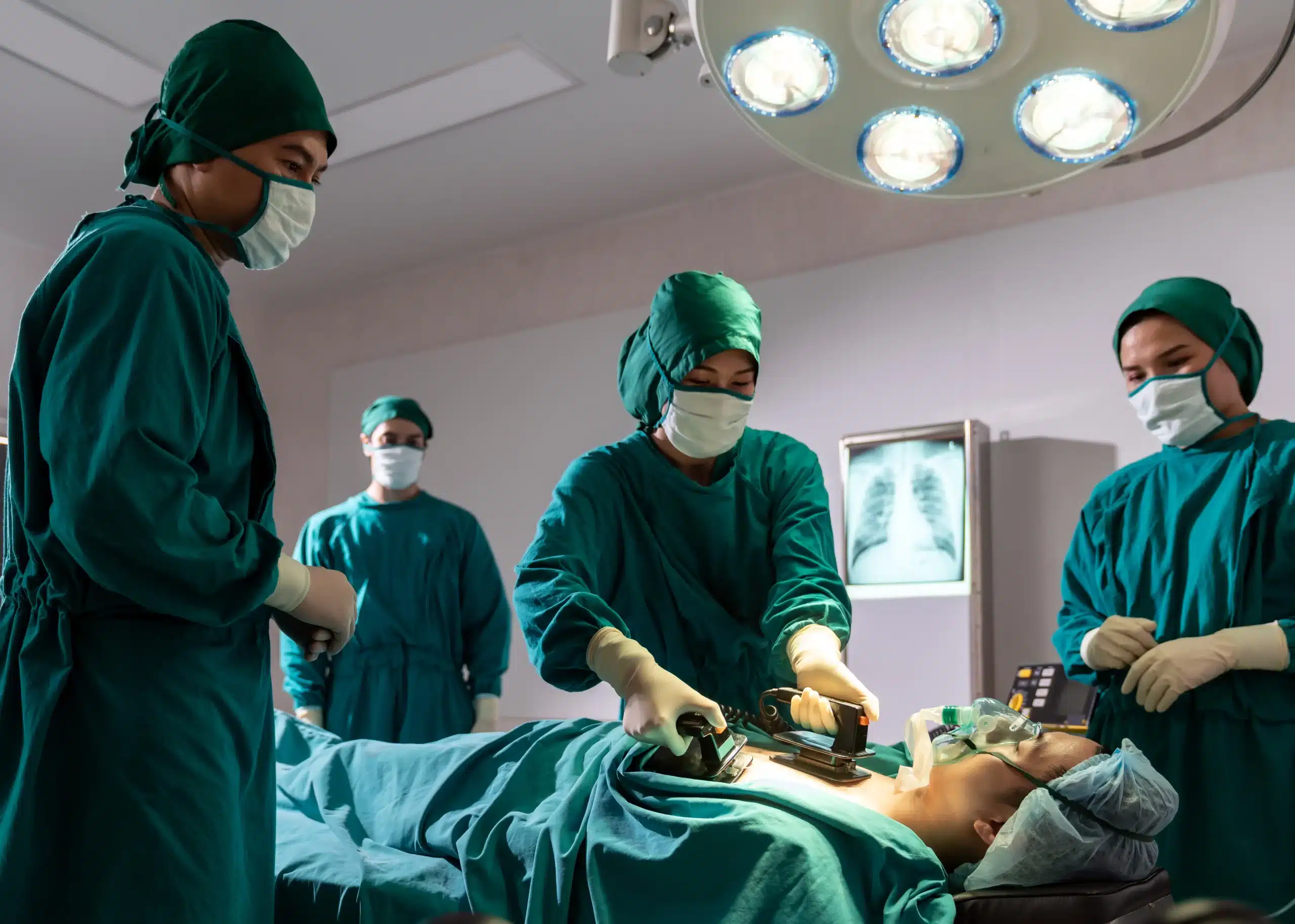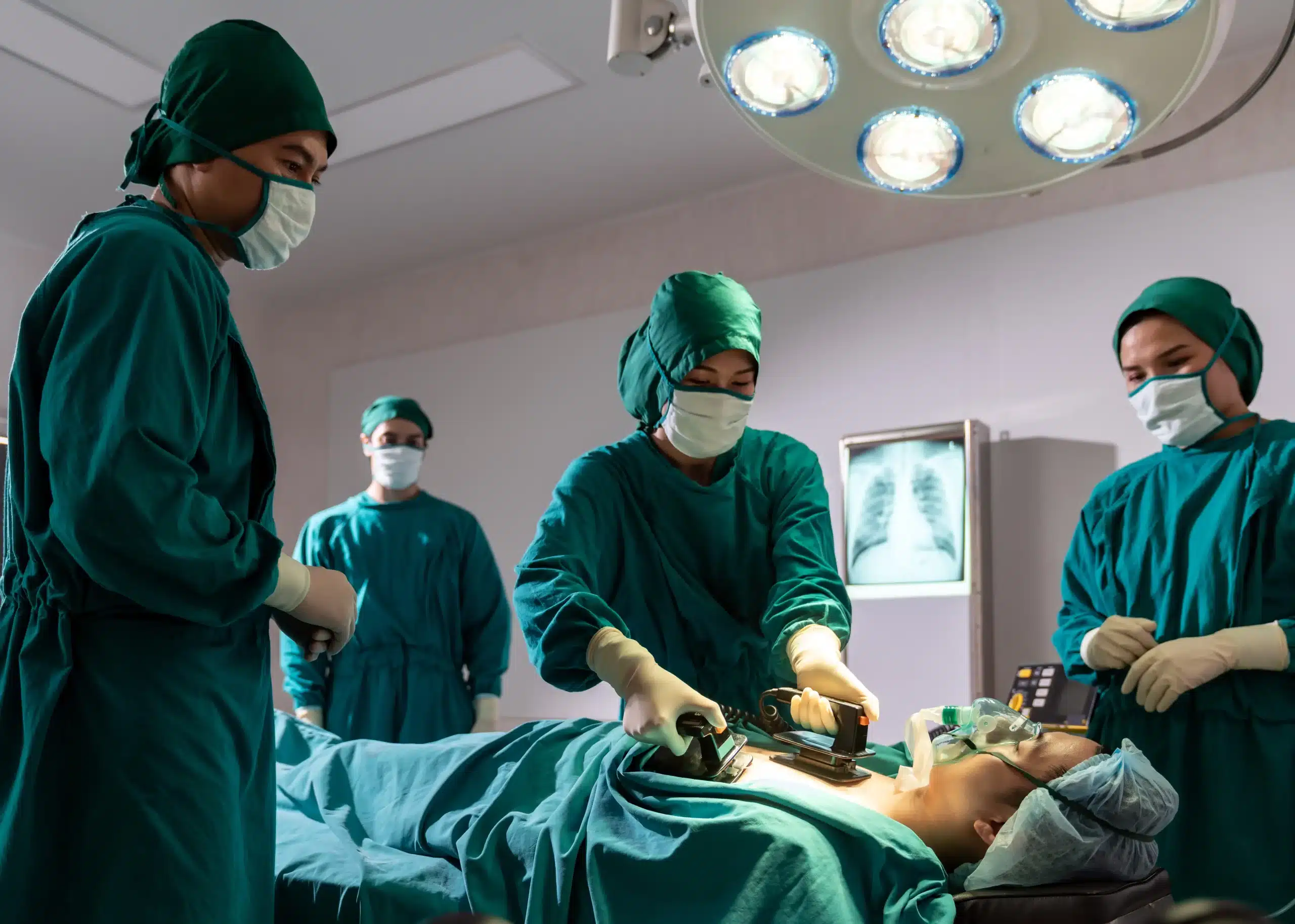You dedicated yourself to a career in healthcare, and that means a commitment to continuous learning. BLS recertification is a vital part of that journey, ensuring you’re equipped to handle emergencies with confidence. This guide breaks down the recertification process, making it less daunting and more manageable. Whether you’re searching for “BLS recertification near me” or prefer the flexibility of online learning, we’ll help you find the right course for your needs. We’ll also cover costs, prerequisites, and what to expect during the course, so you can feel prepared and ready to refresh your life-saving skills.
Key Takeaways
- Regular BLS recertification maintains your life-saving skills and keeps you current with the latest guidelines. This preparedness is crucial for responding effectively in emergencies.
- Choosing the right course involves evaluating provider reputation, course format (online, blended, or in-person), and overall cost. Find a balance that suits your learning style, schedule, and budget.
- Preparing beforehand with study guides and practice scenarios helps you confidently refresh your skills and knowledge. Active participation during the course reinforces learning and ensures a successful recertification.
What is BLS Recertification?
What is BLS & Why Recertify?
Basic Life Support (BLS) training equips you with essential life-saving skills like high-quality CPR and using an Automated External Defibrillator (AED). It’s a cornerstone of emergency medical training, focusing on the skills needed to respond to life-threatening situations. BLS certification is especially important for healthcare professionals, lifeguards, fitness instructors, and anyone who needs these skills on the job. Think of it as your toolkit of knowledge and practical skills, ready when seconds count. Your BLS certification is valid for two years. After that, you’ll need to recertify to stay current and compliant. This involves a refresher course and an exam to ensure your skills are sharp and up to date.
Why Stay Current with BLS Skills?
BLS training aims to give you the confidence and knowledge to handle emergencies effectively. It’s a concise yet comprehensive course designed to prepare you for critical situations. However, studies show that BLS skills can decline quickly after initial training. This skill decay00264-5/fulltext) can impact patient outcomes, especially after cardiac arrest, where the quality of CPR directly affects survival rates. Regular recertification combats this decline, reinforcing best practices and keeping your skills fresh. Staying current00716-7/fulltext) with the latest guidelines and techniques ensures you provide the highest quality care in emergencies. It’s not just about maintaining your certification—it’s about maintaining your ability to make a real difference.
Find BLS Recertification Courses Near You
Finding the right BLS recertification course can feel overwhelming, but it doesn’t have to be. Start by exploring established providers, then compare your options to find the best fit for your needs. We’ve compiled some helpful tips to simplify your search.
Top BLS Recertification Providers
American Heart Association (AHA)
The American Heart Association offers various ways to renew your BLS card, including online courses and in-person classes. They are a trusted source for CPR training and certification.
American Red Cross
The American Red Cross also provides BLS renewal and recertification courses. Their programs have been a staple for businesses and organizations for over a century.
San Rafael CPR Classes
San Rafael CPR Classes offers various CPR course formats, including in-person, blended learning, and online options. This flexibility allows you to choose the format that best suits your schedule and learning style. We serve San Rafael, Corte Madera, and Fairfax, CA, and offer a low price guarantee.
Local Hospitals & Community Colleges
Many local hospitals and community colleges offer BLS recertification courses. These courses often cater to healthcare professionals and offer convenient local options. Check with hospitals and community colleges in your area for their course schedules.
Use Online Tools to Find Nearby Courses
Searching online is a quick way to locate BLS recertification courses near you. A simple search for “BLS Recertification near me” can yield helpful results. You can also use online directories like our Northern California CPR Directory to find certified instructors and training centers.
Evaluate Provider Reputation & Accreditation
When choosing a provider, consider their reputation and accreditation. Look for providers with experienced instructors, positive reviews, and up-to-date training materials. A provider’s responsiveness to questions and their ability to offer feedback on your performance are also important factors. Choosing a reputable provider ensures you receive high-quality training that meets industry standards.
Course Formats & Duration Options
Finding the right BLS recertification course often depends on your learning style and schedule. Let’s explore the different formats available, so you can choose what works best for you.
In-Person Recertification Courses
In-person recertification courses offer hands-on training and direct interaction with instructors. This format is ideal for those who learn best in a traditional classroom setting and value the opportunity to practice skills in real-time. Organizations like the American Red Cross offer in-person BLS renewal and recertification courses. These typically last between 2.5 to 4.5 hours, depending on the specific requirements. Check with your local training centers for their in-person course schedules. At San Rafael CPR Classes, we prioritize hands-on learning to ensure you feel confident and prepared to use your BLS skills. We offer courses in over 60 cities and have a low price guarantee, making high-quality training accessible to everyone.
Online & Blended Learning
If you need more flexibility, online and blended learning options are a great choice. The American Heart Association (AHA) offers a BLS recertification course that can be completed online, allowing you to learn at your own pace and fit the training around your existing commitments. Blended learning combines online modules with in-person skills sessions, offering a balance of convenience and practical application. This format is perfect for busy professionals or those who prefer a more self-directed approach. Our online courses maintain the same high standards as our in-person training, ensuring you receive comprehensive and up-to-date instruction.
Typical Course Durations & Scheduling
Most BLS recertification courses are designed to be efficient and fit within a reasonable timeframe. You can typically expect a course to last anywhere from a few hours for an abbreviated recertification to a full day for a more comprehensive review. BLS certification is usually valid for two years, and renewal can often occur up to 30 days after the expiration date. Many providers offer various course schedules throughout the week and even on weekends to accommodate different schedules. Check with providers like San Rafael CPR Classes for their course calendar and availability. We understand that your time is valuable, so we offer streamlined courses that get you recertified quickly and efficiently. Contact us today to find a course that fits your needs.
Cost & Value
Getting recertified in BLS is an investment in your skills and career, so understanding the costs is important. Let’s break down the typical expenses and explore ways to find the best value.
Average Course Prices
BLS recertification courses typically range from $70 to $120. For example, a BLS course from a provider like Berkeley CPR Classes often costs around $120, covering the online portion, skills test, and your certification card. Prices vary based on location, course format (in-person vs. blended learning), and the training provider.
Additional Fees
While the course fee covers the core components, keep in mind there might be extra costs. Some courses require the American Heart Association (AHA) textbook, which can add $20–$25 to your total. Always double-check what’s included in the course fee to avoid surprises.
Discounts, Promotions, & Group Rates
If you’re recertifying with a group, look for group discounts. Many providers, including ACLS National, offer significant price breaks for groups of five or more. This can be a smart way to reduce costs for workplaces or groups of friends recertifying together. It’s always worth asking about potential discounts, even for smaller groups.
San Rafael CPR Classes‘ Low Price Guarantee
San Rafael CPR Classes offers a low price guarantee, ensuring competitive pricing for your BLS training. This commitment to affordability makes it easier to prioritize your recertification without breaking the bank.
Prerequisites & Enrollment
Before signing up for BLS recertification, make sure you meet the requirements and have the necessary documentation. Knowing the guidelines will streamline the process and prevent any last-minute surprises.
Current Certification & Documentation
The primary prerequisite for BLS recertification is holding a current BLS provider card. This shows you’ve completed the initial training and possess the foundational knowledge. If your card is within 30 days of expiring, you’re still eligible to recertify. Keep your current provider card handy, as you’ll likely need it for verification during enrollment. The American Red Cross and other providers clearly outline these requirements.
Recertification Time Frame
BLS certifications are typically valid for two years. Plan to recertify before your card expires to maintain your credentials without interruption. Many training centers, including Save A Life CPR, offer renewal courses up to 30 days after expiration, providing a grace period. However, it’s always best to renew promptly to avoid any gaps in your certification.
Eligibility Criteria
To be eligible for a BLS renewal course, you must possess a current or recently expired BLS certification. While the standard grace period is 30 days, some training centers, like the Critical Care Training Center, may extend this to 60 days. Check with your chosen provider to confirm their specific policy. This flexibility can be helpful if unexpected circumstances prevent you from recertifying immediately. A valid BLS certification demonstrates your commitment to providing high-quality care.
What to Expect in a BLS Recertification Course
Recertification courses cover core BLS skills and knowledge. They’re designed to refresh your abilities and ensure you’re up-to-date on the latest guidelines. Let’s break down what you can expect during your BLS recertification journey.
Course Content & Skills
BLS recertification courses build upon the skills you learned in your initial training. Because BLS certification is for healthcare providers, the courses involve more advanced skills than general CPR training. You’ll review essential life-saving techniques, including high-quality CPR for adults, children, and infants, along with how to relieve choking and use an AED. The course also emphasizes teamwork, communication, and the importance of following the latest American Heart Association guidelines.
Assessments & Hands-On Practice
BLS recertification involves demonstrating your skills in written and practical assessments. You can expect a written exam covering key BLS concepts and procedures. The hands-on portion requires you to perform CPR and other skills in simulated scenarios. This practical application is crucial for building confidence and ensuring you can respond effectively in real-life emergencies. Renew your BLS certification up to 60 days after expiration. This can involve watching videos, taking quizzes, and attending a class with hands-on practice.
Materials & Resources
Typically, all required study materials are included with your course registration. This often includes textbooks, manuals, and access to online resources. Some providers also offer practice tests and videos to help you prepare for the assessments. Online BLS certification courses often include all study materials with purchase.
Same-Day Certification & Digital Certificates
Upon successful completion of the course, you’ll receive your updated BLS certification card. Many providers offer same-day certification, so you can leave the class with your new credentials. Digital certificates are also becoming increasingly common, offering a convenient way to access your qualifications. Some courses provide a 2-year American Heart Association BLS certification, and you can get certified the same day.
Overcome Common Recertification Challenges
Let’s face it, renewing your BLS certification can feel like another task on an already overflowing to-do list. But staying current with your skills is crucial for providing effective care, and thankfully, there are ways to make the recertification process smoother.
Find Convenient Locations & Schedules
One of the biggest hurdles for healthcare professionals is finding the time for BLS recertification. Juggling work, family, and other commitments makes it tough to carve out time for a course. Look for providers like San Rafael CPR Classes that offer courses in multiple locations and various schedules, including evenings and weekends. This flexibility can make fitting recertification into your busy life much easier. We serve San Rafael, Corte Madera, and Fairfax, CA. Check out our Northern California CPR directory for more information.
Understand Course Requirements
Not all BLS recertification courses are created equal. Understanding the specific requirements of your certifying body, such as the American Heart Association, is essential. Before you sign up, clarify what the course covers, the included materials, and what you need to bring. This due diligence will help you avoid any surprises and ensure you’re taking the right course for your needs. Avoiding common pitfalls during BLS recertification is key to staying prepared for emergencies. Our RQI program offers a streamlined recertification process for healthcare professionals.
Stay Updated with Guidelines
Staying current with the latest BLS guidelines is critical for providing the best possible care. Regularly review updates from your certifying organization to ensure your techniques are up-to-date. Studies00716-7/fulltext) highlight the importance of proper training and feedback for effective BLS skills retention. Choose a course that emphasizes these elements to maximize your learning and preparedness. San Rafael CPR Classes prioritizes staying aligned with the most recent guidelines, so you can feel confident in your skills. We also offer an EMSA Child Care Health & Safety course for childcare providers.
Balance Cost & Quality
Cost is always a factor, but don’t let it compromise the quality of your training. Many BLS renewal courses include training materials, so check with your provider to see what’s covered. Look for providers like San Rafael CPR Classes that offer a low price guarantee without sacrificing the quality of instruction. Investing in a reputable course ensures you receive comprehensive training and maintain your skills at the highest level.
Prepare for Your BLS Recertification
Getting ready for your BLS recertification doesn’t have to be stressful. With a little preparation, you can walk into your course feeling confident and ready to refresh your life-saving skills. Here’s how to get started:
Study Guides & Practice Materials
Brushing up on key concepts before your recertification course can make a real difference. BLS covers essential skills like high-quality CPR and AED use, often with specific techniques tailored for infants, children, and adults. Reviewing BLS study guides and practice materials can help you get reacquainted with these procedures. Many organizations, like the American Heart Association, offer resources specifically designed for BLS review.
Online Resources & Practice Scenarios
Take advantage of online resources to make your preparation more engaging and effective. Many providers, including the ACLS Certification Institute, offer online courses and practice tests that let you review material at your own pace. These resources often include interactive scenarios that simulate real-life emergencies, giving you a chance to apply your knowledge and refine your decision-making. Look for courses accredited by reputable organizations like the ADA, AMA, or ANCC for the best learning experience.
Tips for Successful Recertification
Want to ace your recertification? Here are a few simple tips:
- Active Participation: Engage with your instructor and ask questions. Effective training programs encourage open communication and feedback, which can significantly improve your skills.
- Regular Practice: Don’t wait until your recertification course to practice your BLS skills. Consistent practice is key to maintaining proficiency. Use online resources and practice scenarios to stay sharp.
- Stay Updated: BLS guidelines and techniques can evolve, so make sure you’re familiar with the latest recommendations. Online resources and courses can help you stay current.
Related Articles
- BLS Certification in Fairfax: The Complete Guide – San Rafael CPR Classes
- BLS Courses in Corte Madera: Your Certification Guide – San Rafael CPR Classes
- BLS Renewal in Corte Madera: Find the Right Course – San Rafael CPR Classes
- BLS Classes in San Rafael: Your Guide – San Rafael CPR Classes
- BLS Classes Near Me: Your Complete Guide – San Rafael CPR Classes
Frequently Asked Questions
How often do I need to recertify my BLS certification? BLS certification is typically valid for two years. It’s best to recertify before your card expires to avoid any gaps in your credentials. Many providers offer a grace period, often around 30 days, allowing you to recertify shortly after your expiration date.
What are the different ways I can get recertified in BLS? You have several options for BLS recertification, including in-person courses, online programs, and blended learning, which combines online modules with in-person skills sessions. Choose the format that best suits your learning style and schedule.
What should I expect during a BLS recertification course? Expect a review of core BLS skills like CPR for adults, children, and infants, AED use, and choking relief. You’ll likely have a written exam and a hands-on skills assessment to demonstrate your proficiency.
How much does BLS recertification cost? BLS recertification courses generally range from $70 to $120, depending on the provider, location, and course format. Look for providers that offer a low price guarantee or group discounts to save on costs.
What if my BLS certification has already expired? Many training centers allow recertification within a grace period, often up to 30 days after expiration. Check with your chosen provider to confirm their policy. If your certification is beyond the grace period, you may need to retake the full BLS course.
